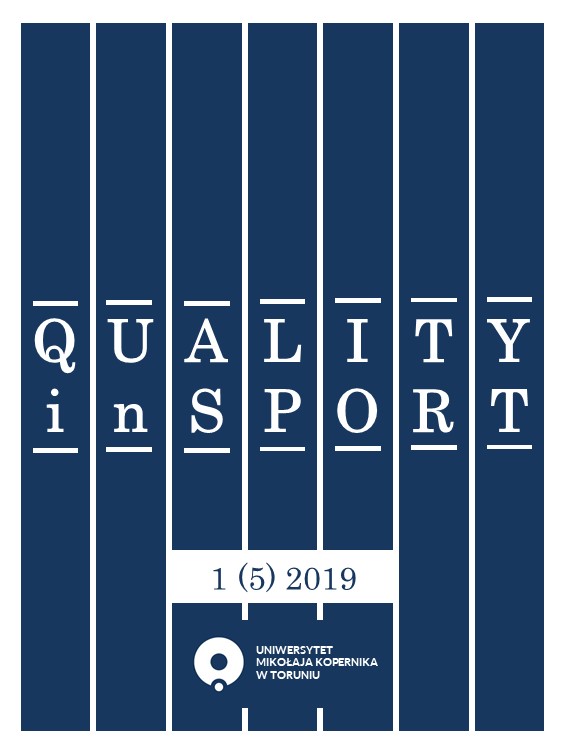Development of physical fitness – gender differences and characteristics
DOI:
https://doi.org/10.12775/QS.2019.003Abstract
Physical activity, recreational sports as well as competitive sports effect the human body. Changes that occur under training are mainly connected to the adaptation process of body to specific form of activity. But on the other hand, changes that may be observed may lead to body functioning dysregulations that may affect health of sportsmen. Most of the changes are being observed mainly in the functioning of the female body system, despite the fact that they are not gender specific. In women, the undesirable effect of intensive training and heavy training loads may be inhibition of sexual maturation, withdrawal of the menstrual cycle and its irregularity, as well as resolution of the reproductive system function. That’s why the understanding of gender specific changes are so important for the sportsmen and trainers to understand what may be observed during training and what it may lead to.
The aim of this work was to show the basic differences between gender physical fitness development observed during body development and physical training.
References
Beneke, R., Leithäuser, R. M., Doppelmayr, M. (2005). Women will do it in the long run. British journal of sports medicine, 39(7), 410-410.
Biddle, S. J., Atkin, A. J., Cavill, N., Foster, C. (2011). Correlates of physical activity in youth: a review of quantitative systematic reviews. International Review of Sport and Exercise Psychology, 4(1), 25-49.
Bouchard, C., Shephard, R. J., Stephens, T., Sutton, J. R., McPherson, B. D. (1990). Exercise, fitness, and health: a consensus of current knowledge: proceedings of the International Conference on Exercise, fitness, and health, Human Kinetics Publishers.
Carter, J. L., Carter, J. L., & Heath, B. H. (1990). Somatotyping: development and applications (Vol. 5). Cambridge University Press.
Coast, J. R., Blevins, J. S., Wilson, B. A. (2004). Do gender differences in running performance disappear with distance?. Canadian Journal of Applied Physiology, 29(2), 139-145.
Drozdowski Z. (1997), „Biologiczny rozwój człowieka”. AWF Poznań. Skrypty, 102.
Eagly, A. H. (1995). The science and politics of comparing women and men. American psychologist, 50(3), 145.
Hines, M. (2004). Androgen, estrogen, and gender: Contributions of the early hormone environment to gender-related behavior. The psychology of gender, 2, 9-37.
Knisel, E., Opitz, S., Wossmann, M., Keteihuf, K. (2009). Sport motivation and physical activity of students in three European schools. International Journal of Physical Education, 46(2), 40-53.
Malinowski A., Stolarczyk H., (1999) Wstęp do antropologii i ekologii człowieka. Wydaw. Uniwersytetu Łódzkiego, s. 228-240
Malinowski A., Tatarczuk J., Asienkiewicz R. (2008) Antropologia dla pedagogów. Uniwersytet Zielonogórski, s. 79–83.
Mędraś, M. (Ed.). (2010). Endokrynologia wysiłku fizycznego sportowców: z zarysem endokrynologii ogólnej. MedPharm Polska, s. 136 – 148, 154 – 173.
Osiński, W. (1996). Zarys teorii wychowania fizycznego. Wydaw. AWF.
Wood, W., Eagly, A. H. (2012). Biosocial construction of sex differences and similarities in behavior. In Advances in experimental social psychology (Vol. 46, pp. 55-123). Academic Press.
Downloads
Published
How to Cite
Issue
Section
Stats
Number of views and downloads: 635
Number of citations: 0



